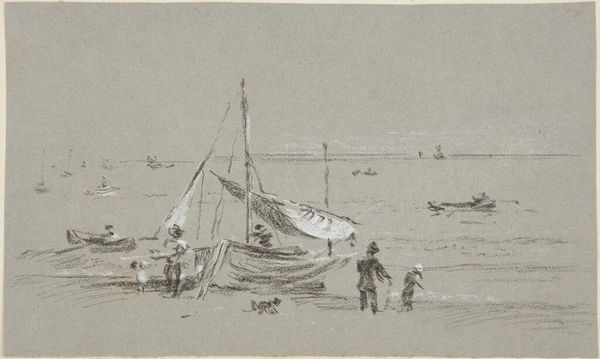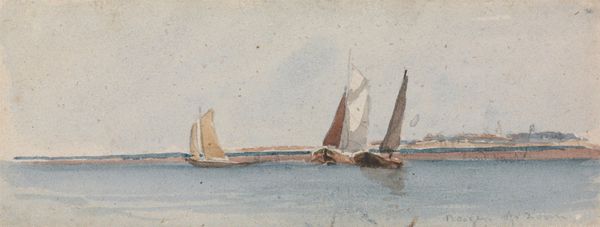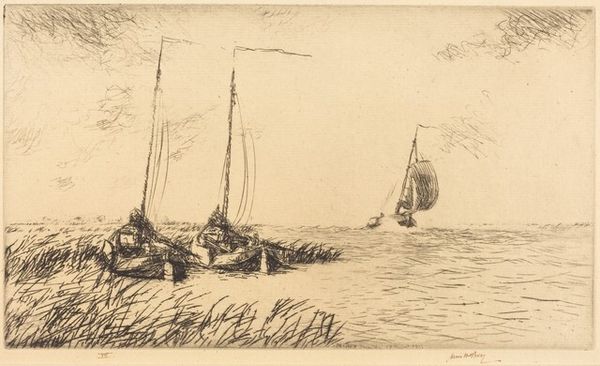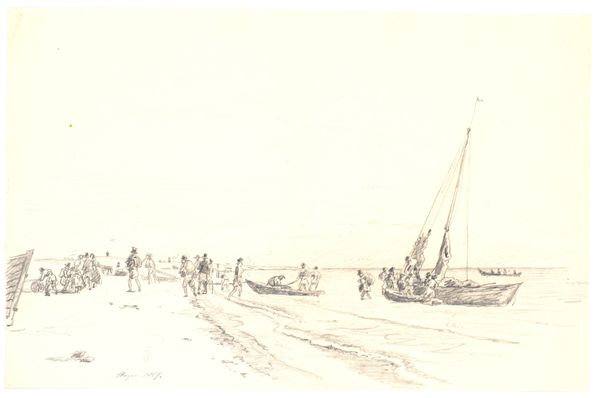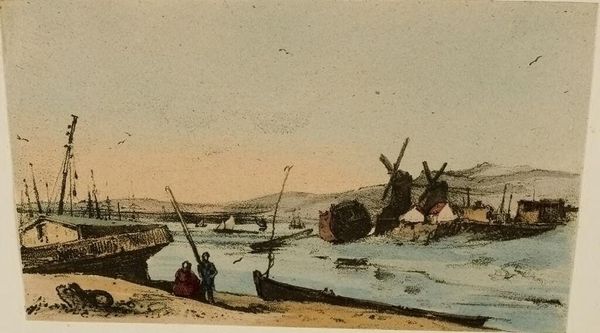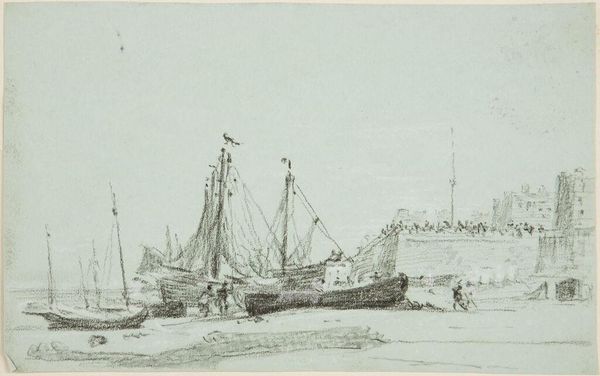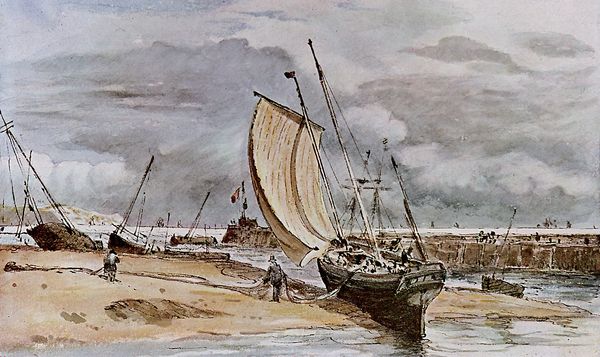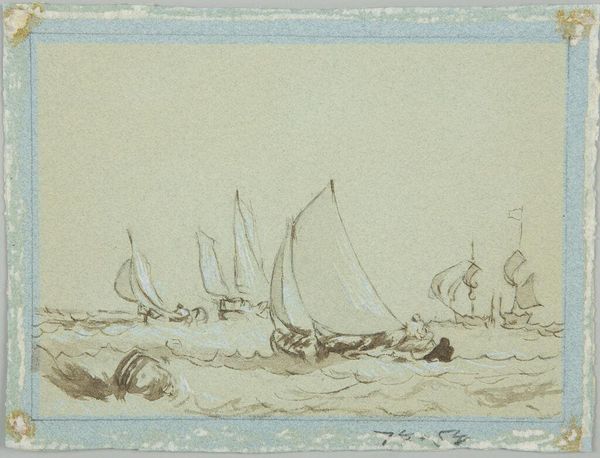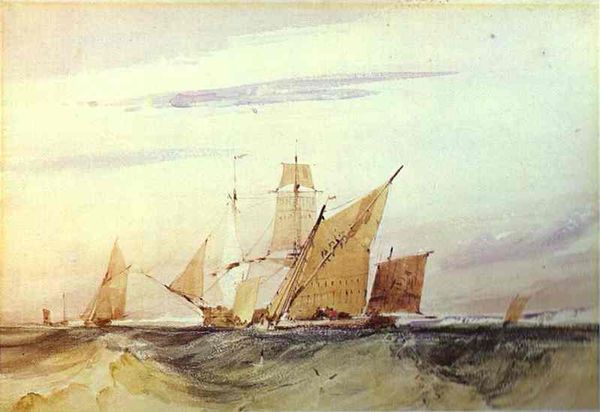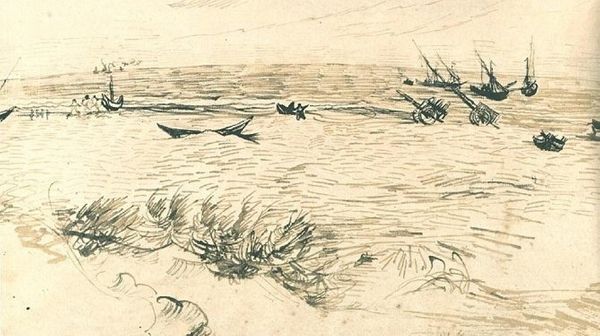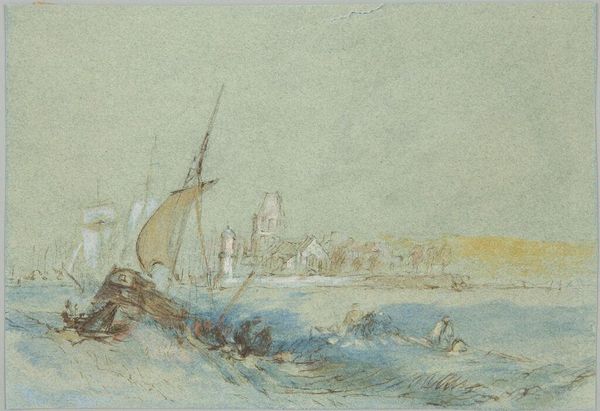
Dimensions: 12.5 x 18.5 cm
Copyright: Public domain US
Curator: At first glance, I'm drawn to the delicate stillness, the subtle hues, and the peaceful, melancholic quality. It's as if time stands still. Editor: Fair enough. But I am compelled by the sketch-like quality of this work—the immediacy of the hand. Here, we have Picasso’s "A Boat on the Canal" from 1905, rendered in watercolor, likely with the addition of ink or charcoal for outlining. We see how the constraints of available resources inevitably inform an aesthetic. Curator: Absolutely. The boat and figures huddle close. Water has long carried immense symbolic weight, denoting journeys and emotionality. The solitary boat whispers of hope and transit. It reflects a state of waiting and expectation, all underpinned by a dream of change, wouldn’t you agree? Editor: Well, while symbolism is intriguing, let's consider that boats are things of labor. That boat itself--how was it constructed, by whom? Water transport at this time involved complex infrastructures. Understanding these contexts is just as informative. We also cannot discount his stylistic departure at the time—the mark-making anticipates the direction his craft would later evolve into, particularly toward Cubism. Curator: True, we mustn't ignore his creative and stylistic path. Still, those ghostly figures grouped by the boat carry resonance. Perhaps a hint of family, but perhaps the scene also speaks to shared destinies or shared challenges during a specific era of immense social and cultural shift. I see a community here by this water and within that fragile vessel of dreams. Editor: That may very well be, and those resonances should be noted alongside material conditions and productive forces. We should look, too, to the paper stock he used; what its availability reflects about consumer society, what was or was not available at that historical juncture… It all reflects the making of the modern world. Curator: A vital reminder indeed, that these objects embody much more than their immediate appearance might suggest. There’s an immense history, a collective consciousness embedded within. Editor: Precisely! The confluence of material production, the artist's hand, the viewer, all coalesce. That convergence constitutes a unique aesthetic and experiential history.
Comments
No comments
Be the first to comment and join the conversation on the ultimate creative platform.
